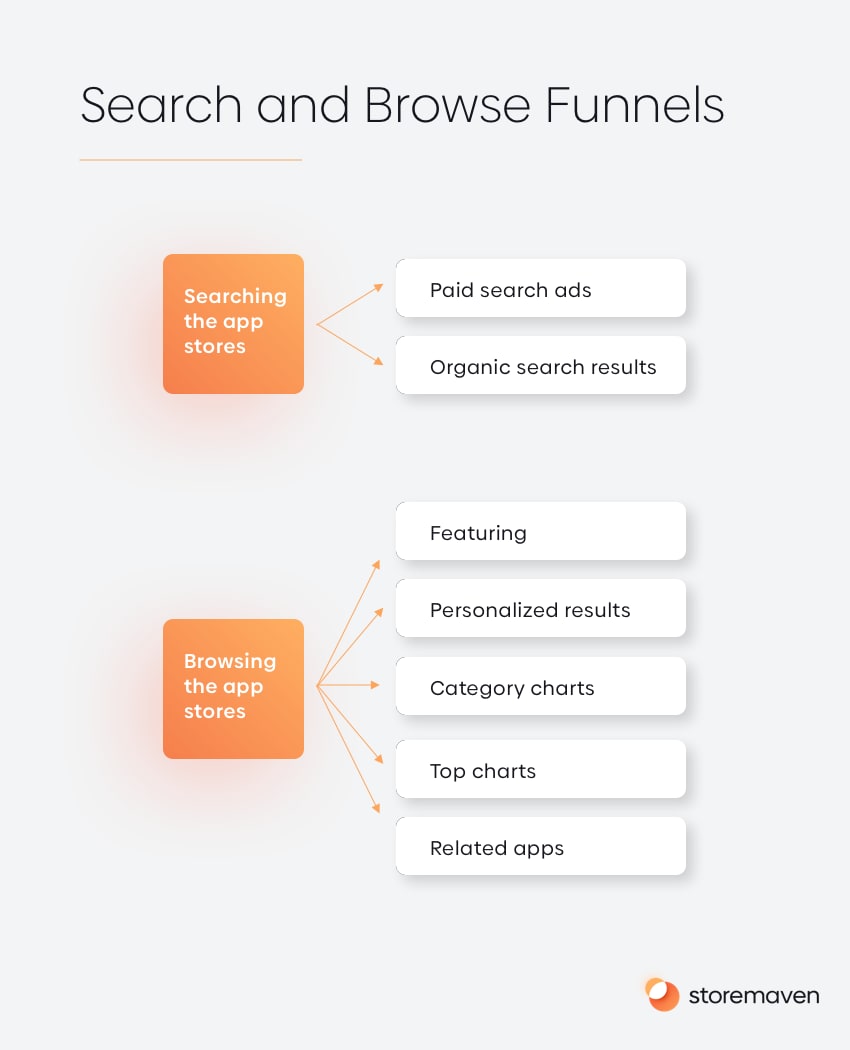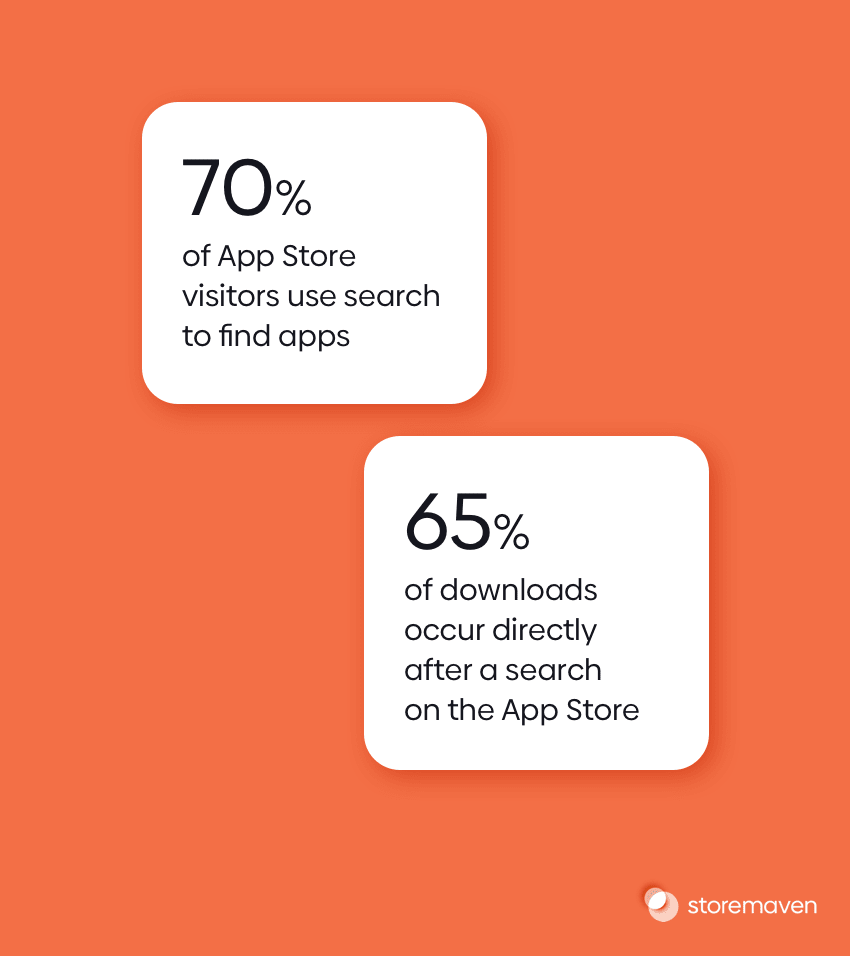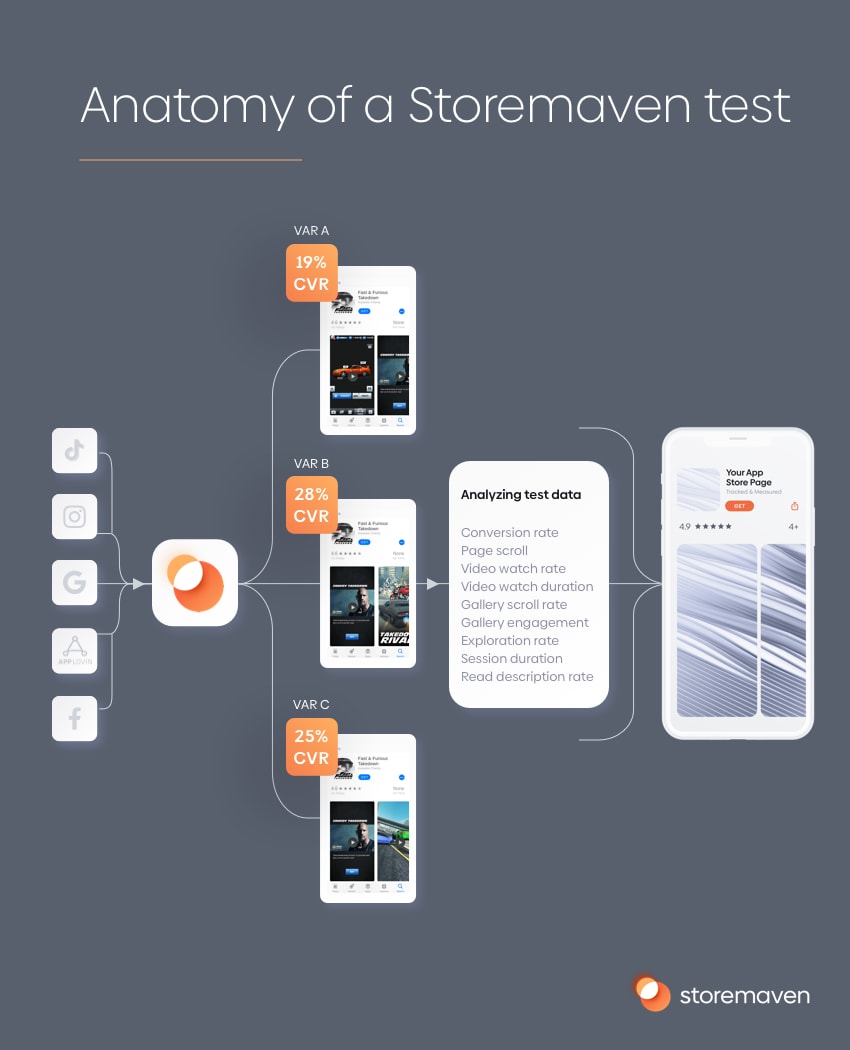The term paid user acquisition, or paid UA for short, is used widely in the mobile marketing landscape. But it seems like the organic side of growth was neglected for years. As the paid UA side evolved with the granular measurement using MMPs (mobile measurement partners) and tracking ROAS (return on ad spend) with high accuracy, the organic side didn’t develop as much.
In this guide, we will cover the basics around organic User Acquisition (UA) and how you can work towards having the same level of sophistication as paid UA in your efforts to drive organic growth.
What is organic user acquisition?
Organic UA can be defined as the set of all marketing activities taken to increase organic growth.
In the world of mobile organic UA, we’re explicitly discussing all the efforts that aim to:
- Increase App Store browse / Google Play explore installs – installs that came from an app listing on any App Store and Google Play page that isn’t the search results page. That includes featured listings or lists, curated lists, and top/category charts.
- Increase App Store / Google Play organic search installs – installs that came from a search result page on the App Store and the Google Play store after the user performed a search.

What is an organic install?
One definition of an organic install liked by most MMPs is “An install that couldn’t be attributed to a paid ad.”
The reason they couldn’t be attributed to an ad can be one of many. There could have been an attribution logic error (using fingerprinting and misidentifying the end-user) or even a user that switched a device.
But, as we’ll see in a bit, the metric you should be looking at is the volume of your first-time installers or app units.
An organic install can be better defined as an install that was driven by the platform’s (App Store & Google Play) browsing or search experience.
That being said, if the platforms drive these installs, what affects growth?
An organic install isn’t just a person who woke up one day and decided out of the blue to install an app. They went through a journey: they were exposed to the brand, in any possible way, which led them to land on your product page and hit that install/get button.
They might have seen an ad and then searched for your brand name on the app stores. Maybe they heard about it from a friend, or maybe they just go to the app store when they are bored and noticed you on one of the feature placements or the top charts.
Understanding what levers you have to affect growth in this funnel is key to understanding that you actually have control over it. After you know what you have at your disposal, the framework you adopt should allow you to constantly experiment and understand the impact of each lever on your organic growth.
How to holistically increase organic mobile growth
In order to increase organic growth, there are multiple levers that the organic UA operation should pull:
1. App Store Optimization
Creative Optimization
This is the practice of optimizing your App Store product page or your Google Play listing with the goal of increasing app store conversion rates. This process involves:
- Creating test hypotheses – come up with test ideas based on research. The ideas should revolve around different alternatives to optimally showcase your app’s value through creatives and messaging to convince and drive users to install.
- Designing app store creatives – translate the hypotheses into app store designs including icons, screenshots, videos, titles, subtitles, short descriptions, and more, taking into consideration the ultra-fast way users make decisions in the app stores.
- Running an app store test – after creating 3-4 variants for your app store page, run a test on a platform, such as StoreMaven, to measure which variant converts better and understand why.
- Analyzing & acting – after concluding the test, analyze the results to see not only which variant converted the best, but also why it did. Without understanding why it’ll be extremely challenging to make ongoing improvements in an iterative manner.
Discoverability Optimization
- Keyword Research for the app store – research the search landscape for your app category/niche using an app store intelligence tool (such as App Annie, AppTweak, or Mobile Action). Focus on the most strategic keywords that balance relevance, difficulty to rank, the competitive landscape, and search popularity.
- Keyword Implementation and testing – implement the keywords optimally in your app’s metadata, such as your App Store keyword field, the title, subtitle, and description.
- Getting featured – work to get noticed by the App Store and Google Play editors in order to get featured on different featuring placements across the stores to maximize visibility.
2. Paid Campaigns
What? I thought we’re talking about organic UA, what do paid campaigns have to do with that? That’s the job of the paid UA team!
Well, as you’ll see below, the app stores’ ranking algorithms rely heavily on certain metrics, such as your install velocity, to determine the ranking on the top charts, category charts, as well as keyword ranking.
- First time installs – both the App Store and the Google Play store take into account the install velocity of first time installs (“app units” in Apple’s lingo) when they determine ranking. Thus, focusing paid UA campaigns on maximizing the volume of first-time installers can significantly drive organic growth by pushing you to the top of the ranking charts.
- Brand awareness – Paid ads don’t necessarily create value just by driving direct response from users (tapping on an ad and installing the app). Many ad channels work as a brand awareness instrument. By advertising, you create more brand awareness, and thus, more users that’ll search for your brand in the app stores. These can be offline channels (such as billboards), YouTube, TV, or channels such as Facebook.
- Paid search – To capitalize on search volumes in your app category and space, you can leverage paid search for keywords you are still not ranking for organically. Although this involves budgets, it does work towards capitalizing on demand that is organic in nature: search.
3. Taking into account external factors
Working to optimize your organic performance (both visibility and conversion rates), you should take into account “events” that are external to your marketing efforts and leverage them.
- Seasonality – consider users’ changing preferences and localizing your app store creatives to maximize conversion rates. This can be around holidays or even industry events such as “New Year’s Resolution” for a fitness app.
- Competitors – be proactive with your competitors’ in the app store and adjust your messaging and strategy to show users how and why your app is different and better.
The importance of organic UA
Why is organic UA important?

The App Store and the Google Play store both operate as a unique ecosystem with its own rules and dynamics.
By understanding these dynamics as a mobile growth team, you can leverage the various methods we identified to understand exactly which ones result in maximum growth. A growth operation that relies solely on paid UA and takes organics as something that “just happens” is missing out on massive platform-driven growth.
Similarly, a “spray and pray” approach of just taking a stab at various organic efforts without understanding these dynamics will lead to a lot of wasted time and resources on marketing efforts that won’t move the needle.
How understanding the app stores contribute to organic growth
Let’s take a look at a hypothetical example of a growth team that is tasked with maximizing install and DAU (daily active user) growth.
Scenario 1: Operating in silos
Let’s imagine that the paid UA team is working, as expected, with an MMP and have allocated their UA budget towards channels and campaigns that show the best performance in terms of ROAS.
The ROAS is calculated by measuring revenues generated by users directly installing the app after tapping on an ad.
In this scenario, the paid UA team might identify a low-performing channel or campaign. The low performance is not a result of a low volume of installs but instead indicates that the users it brings into the app have a low LTV (lifetime value) they’re simply not converting to paying users.
Looking solely at the direct ROAS figure, the paid UA team will conclude that they should shut down the campaign and move their budget elsewhere.
Given that the campaign generated significant volumes of first-time installers for a relatively low cost per install, it also drove the app to the top of the overall and category charts, as well as supported better ranking for some of their strategic keywords.
After shutting down the campaign, the app experiences a sharp drop in organic installs.
Scenario 2: Understanding the dynamics of paid and organics
In an alternative scenario, the paid and ASO teams work together to achieve holistic growth KPIs.
The paid team doesn’t just look at campaign/channel performance from the perspective of direct ROAS, but it also considers its organic contribution.
Instead of just assuming each paid install brings in more organic installs, they understand exactly the metric that correlates with ranking in the app stores, which, in this case, is the first time installs metric, or app units.
By attributing ranking to that specific channel/campaign, the paid team continues to run the campaign (even though the MMP shows low ROAS). The app is able to maximize visibility in the stores and organic installs.
How to improve organic growth with ASO & creative optimization
One of the most important levers you have is to increase app store conversion rates through creative optimization.
Other than the simple observation that by having better conversion rates you’ll convert more browse/explore and search impressions to installs, better conversions directly affect your visibility in the store.
- Better conversions = more first time installs
The App Store and Google Play are great platforms to tap into new audiences that you would not reach using just off-platform marketing.
There are hundreds of millions of users visiting the app stores every day and you get an opportunity (albeit a very short opportunity) to get them to notice your app or game and then convince them to install.
Given this truth, the platforms hold the promise of generating significant first-time installers to your app which will in turn contribute to better ranking as your install velocity increases.
Understanding how new and broad audiences respond to your marketing messages in the app stores, and optimizing them with these people in mind, will directly benefit your visibility efforts, as conversion rates for broad audiences will increase.
- Better conversion = better ranking
Both stores have commented that their algorithms consider product page performance to decide which apps should be displayed through the charts and search results.
Google discussed this openly here, in an article discussing ways to improve your app’s discoverability on the Play store by saying that:
“Last but not least, a quality app also means having an effective and accurate listing page. Does your store listing page make a great first impression? Does it clearly and accurately communicate the value and intended use cases of your app?”
Apple also noted that one of the most important ranking factors is user behavior and user intent data, hinting that their algorithms consider how users respond to your product page.
How to optimize your app store page for organic conversion rates
To increase organic conversion rates, you have to understand what messages and creatives push your organic users away (users often don’t have any familiarity with your app) and which ones drive them to install.
The only scientific approach to achieve that is to run a clean App Store or Google Play product page test.
Here is how such a test would look on a high level:

The test involves setting up a replicated environment of your App Store or Google Play page and creating different variants with different hypotheses around the most effective messaging strategy then creating a sample of traffic that represents your organic traffic. According to our data (based on more than 500M users sampled through app store tests), this can be achieved by using Facebook ads targeting an audience that is a proxy for organic traffic.
But the mechanism of the test is just the beginning of your organic growth journey. To truly implement a methodical process in which you’re able to gain ongoing improvements, you need to adopt a testing framework that works.
This involves:
- Creating great hypotheses – start with research into your users and how they perceive value in your app and the competitive landscape. Inform your ideas from past tests. Without strong hypotheses to accept or reject, the test is rendered almost useless.
- Matching app store designs with the way users make decisions in the store – translate the hypotheses into app store page designs that align with the way users make decisions in the app stores. For example, it doesn’t make a ton of sense to convey your hypothesis through the 4th and 5th screenshots that only a fraction of users will see.
- Choosing a traffic strategy and running the test – By researching your current user base and UA efforts, work to create a campaign (most likely on Facebook) that acts as a proxy for organic traffic.
- Analyzing results and acting – carefully analyze the way users interacted with the different variations and understand why a certain variation converted better. Armed with this insight, you can not only implement the winning variation in the real store but also easily come up with ideas for your next test.
If you need help with setting up your organic conversion rate optimization process and want to see StoreMaven’s platform in action, let’s chat. Feel free to request a call with one of our experts.
Conclusion
In the App Store, 80 to 85% of users install apps organically, meaning they’re using the store to install. Understanding the levers that can be pulled that will increase the way Apple surfaces your app in those areas, could increase growth through organic installs.
There are multiple marketing tools available that will increase discoverability and drive organic UA. Brand awareness can be raised offline through advertising on TV or billboards, or online in the form of branded ads, influencer campaigns and getting featured in the ‘For You’ tab on Google Play and the ‘Today’ tab on the App Store. One way that’s related to the ASO industry is to optimize an app listing to increase conversion for organic installs of users that are browsing (iOS) or exploring (Google) top charts for specific apps.
Organic UA can bring invaluable traffic. Any user who consciously took the necessary steps to find and download an app of their own accord means they’re immediately more engaged and invested in making the most of the experience.

















